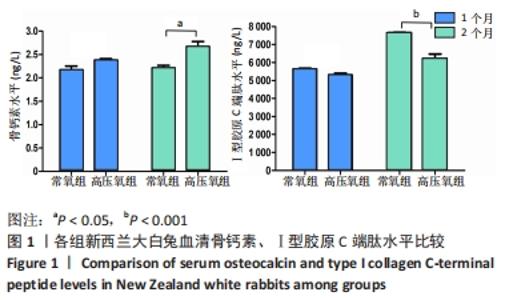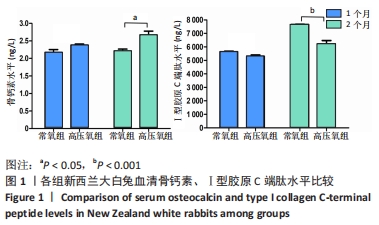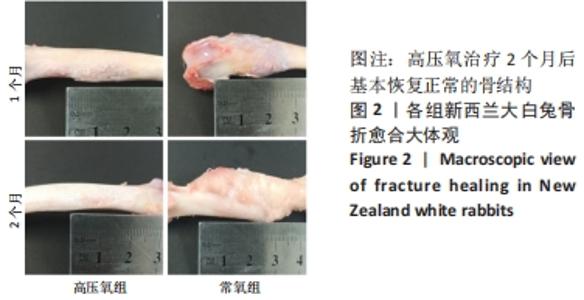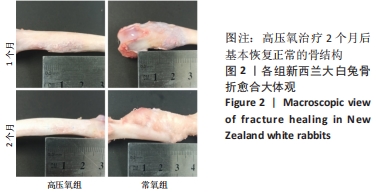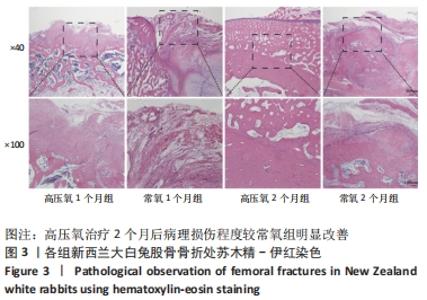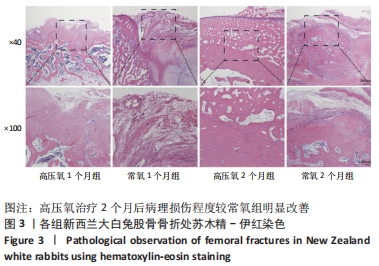[1] 柴本甫.骨和骨折的生物力学基础概念[J].国外医学(创伤与外科基本问题分册),1981(3):131-137.
[2] BAKER CE, MOORE-LOTRIDGE SN, HYSONG AA, et al. Bone Fracture Acute Phase Response-A Unifying Theory of Fracture Repair: Clinical and Scientific Implications. Clin Rev Bone Miner Metab. 2018;16(4): 142-158.
[3] EINHORN TA, GERSTENFELD LC. Fracture healing: mechanisms and interventions. Nat Rev Rheumatol. 2015;11(1):45-54.
[4] BENNETT MH, STANFORD RE, TURNER R. Hyperbaric oxygen therapy for promoting fracture healing and treating fracture non-union. Cochrane Database Syst Rev. 2012;11(11):CD004712.
[5] CHEN C, YANG Y, YAO Y. HBO Promotes the Differentiation of Neural Stem Cells via Interactions Between the Wnt3/β-Catenin and BMP2 Signaling Pathways. Cell Transplant. 2019;28(12):1686-1699.
[6] 钟准,郭筠芳,雷雯,等.早期行鼓室内甲强龙注射或高压氧对全聋型突发性聋患者的疗效观察[J].听力学及言语疾病杂志,2021, 29(1):51-53.
[7] WEI L, WANG J, CAO Y, et al. Hyperbaric oxygenation promotes neural stem cell proliferation and protects the learning and memory ability in neonatal hypoxic-ischemic brain damage. Int J Clin Exp Pathol. 2015; 8(2):1752-1759.
[8] HEALTH QUALITY ONTARIO. Hyperbaric Oxygen Therapy for the Treatment of Diabetic Foot Ulcers: A Health Technology Assessment. Ont Health Technol Assess Ser. 2017;17(5):1-142.
[9] 白登彦,张文贤.高压氧联合神经生长因子局部注射对骨质疏松性骨折延迟愈合患者血清黏附因子及微循环指标表达的影响[J].中国骨质疏松杂志,2019,25(9):1206-1211.
[10] 赵子春,李凌伟.高压氧治疗联合仙灵骨葆胶囊对老年股骨近端骨折延迟愈合患者的临床疗效[J].中国生化药物杂志,2016,36(6): 133-135.
[11] 郭树章,季明华,许刚,等.兔骨折延迟愈合动物模型的建立[J].实用骨科杂志,2012,18(3):230-232.
[12] 陈肖松,程迅生,马武秀,等.高压氧治疗海水浸泡兔胫骨开放性骨折的实验研究[J].中华航海医学与高气压医学杂志,2016,23(2): 98-103.
[13] 蔡金池,张通,袁志发,等.股骨干骨折不愈合现状及研究进展[J].甘肃医药,2021,40(9):769-772,776.
[14] 李广.研究髓内钉固定治疗胫骨中下段骨折不愈合的疗效[J].中国医疗器械信息,2021,27(14):53-54.
[15] REIS ND, SCHWARTZ O, MILITIANU D, et al. Hyperbaric oxygen therapy as a treatment for stage-I avascular necrosis of the femoral head. J Bone Joint Surg Br. 2003;85(3):371-375.
[16] 顾惠珍.高压氧用于治疗四肢骨折延迟愈合的疗效观察[J].中国康复医学杂志,2013,28(4):356-358.
[17] ORTEGA MA, FRAILE-MARTINEZ O, GARCÍA-MONTERO C, et al. A General Overview on the Hyperbaric Oxygen Therapy: Applications, Mechanisms and Translational Opportunities. Medicina (Kaunas). 2021; 57(9):864.
[18] 王静杰.高压氧联合后路减压固定术综合治疗骨质疏松性椎体骨折30例疗效分析[J].中华航海医学与高气压医学杂志,2018,25(4): 264-266.
[19] 王海东,杨智权,张平,等.冲击波联合高压氧治疗长骨骨折不愈合的疗效分析[J].中国康复理论与实践,2014,20(4):385-388.
[20] 丁洁,徐天睿.高压氧治疗胫骨中下段骨折愈合延迟的疗效观察[J].华西医学,2017,32(11):1763-1765.
[21] 吴东,吴建珊,阎福华,等.高压氧对体外培养的成骨细胞增殖和分化的影响[J].生物化学与生物物理进展,2008,35(7):791-800.
[22] 冯晓丽,张忠辉.I型胶原C末端肽的检测方法和临床运用[J].中国骨质疏松杂志,2000,6(4):87-89,19.
[23] 蔡桂英,葛雪琳,魏玲,等.血清骨钙素水平的观察[J].中国骨质疏松杂志,1999,5(2):29-32.
[24] 郑樱,纪树荣,周红俊,等.骨钙素与脊髓损伤[J].中国康复理论与实践,2007,13(1):56-58.
[25] CRISTIANI A, MASET F, DE TONI L, et al. Carboxylation-dependent conformational changes of human osteocalcin. Front Biosci (Landmark Ed). 2014;19:1105-1116.
[26] WESTHRIN M, KOVCIC V, ZHANG Z, et al. Monoclonal immunoglobulins promote bone loss in multiple myeloma. Blood. 2020;136(23):2656-2666.
[27] 余斌.高压氧联合骨肽治疗对跟骨骨折术后切口血运及骨折愈合的影响[J].首都食品与医药,2019,26(5):17.
[28] 冯宗贤,郑敏哲,徐君翔,等.高压氧辅助治疗胫骨骨折的临床疗效及对血清FGF-2和IGF-1的影响[J].中华航海医学与高气压医学杂志,2019,26(3):239-241.
[29] 伯宇,金云,臧园,等.高压氧综合治疗对胫骨骨折患者术后愈合及骨性标志物水平的影响[J].中华航海医学与高气压医学杂志, 2019,26(6):583-587.
|
